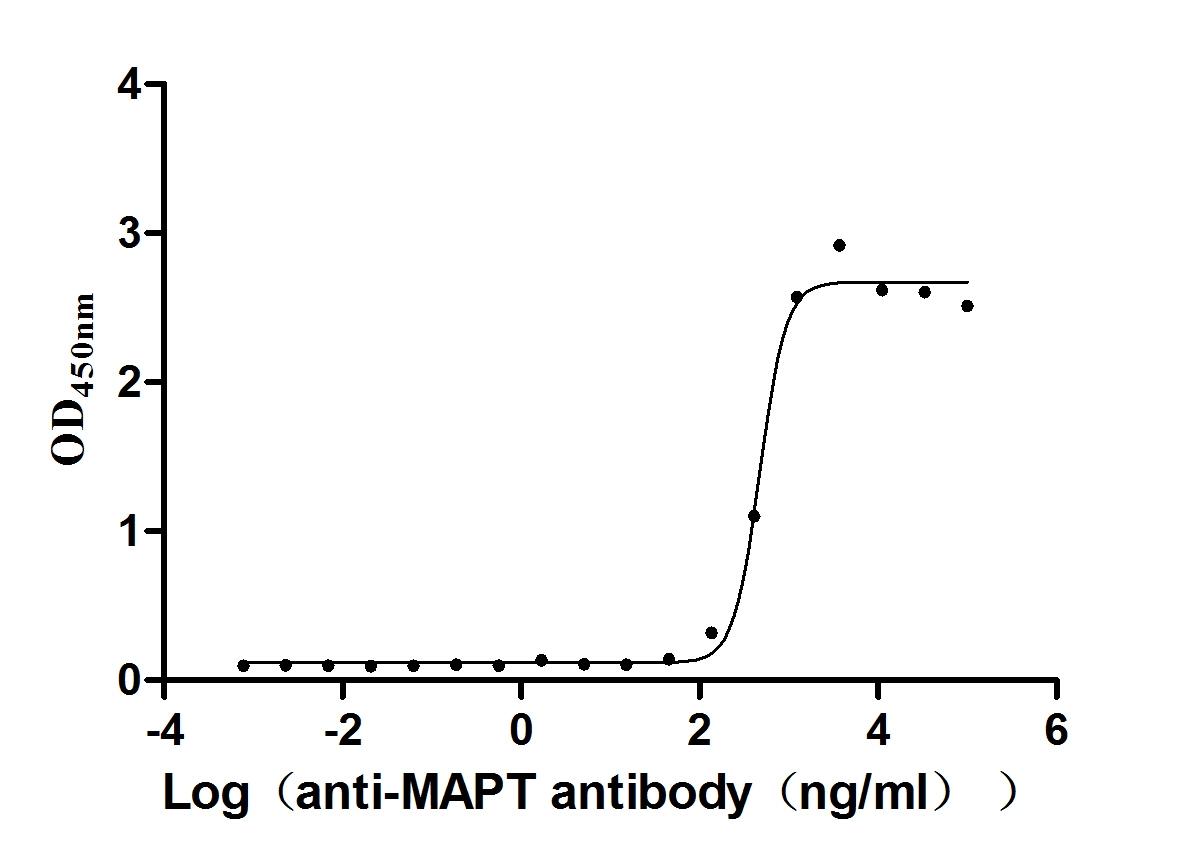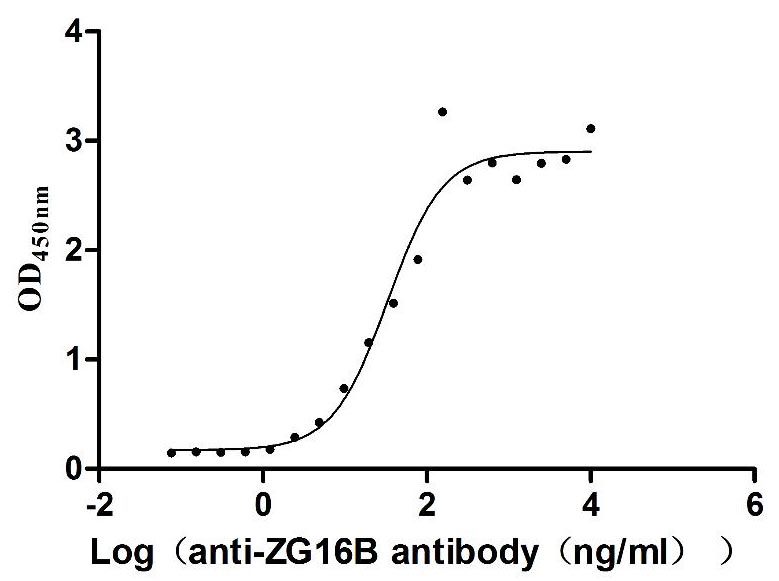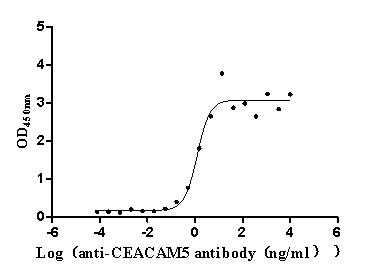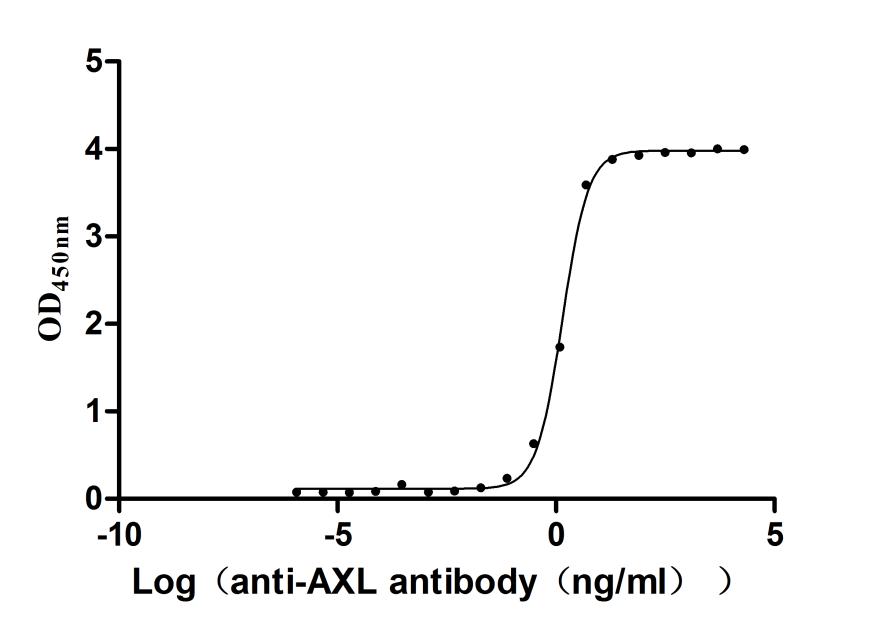Recombinant Human Potassium channel subfamily T member 1 (KCNT1), partial
-
中文名称:人KCNT1重组蛋白
-
货号:CSB-YP686387HU
-
规格:
-
来源:Yeast
-
其他:
-
中文名称:人KCNT1重组蛋白
-
货号:CSB-EP686387HU
-
规格:
-
来源:E.coli
-
其他:
-
中文名称:人KCNT1重组蛋白
-
货号:CSB-EP686387HU-B
-
规格:
-
来源:E.coli
-
共轭:Avi-tag Biotinylated
E. coli biotin ligase (BirA) is highly specific in covalently attaching biotin to the 15 amino acid AviTag peptide. This recombinant protein was biotinylated in vivo by AviTag-BirA technology, which method is BriA catalyzes amide linkage between the biotin and the specific lysine of the AviTag.
-
其他:
-
中文名称:人KCNT1重组蛋白
-
货号:CSB-BP686387HU
-
规格:
-
来源:Baculovirus
-
其他:
-
中文名称:人KCNT1重组蛋白
-
货号:CSB-MP686387HU
-
规格:
-
来源:Mammalian cell
-
其他:
产品详情
-
纯度:>85% (SDS-PAGE)
-
基因名:KCNT1
-
Uniprot No.:
-
别名:bA100C15.2; EIEE14; ENFL5; KCa4.1; KCNT1; KCNT1_HUMAN; Potassium channel subfamily T member 1; Potassium channel, sodium activated subfamily T, member 1; Potassium channel, subfamily T, member 1 ; Sequence like a calcium-activated K+ channel; SLACK ; Slo2.2
-
种属:Homo sapiens (Human)
-
蛋白长度:Partial
-
蛋白标签:Tag type will be determined during the manufacturing process.
The tag type will be determined during production process. If you have specified tag type, please tell us and we will develop the specified tag preferentially. -
产品提供形式:Lyophilized powder
Note: We will preferentially ship the format that we have in stock, however, if you have any special requirement for the format, please remark your requirement when placing the order, we will prepare according to your demand. -
复溶:We recommend that this vial be briefly centrifuged prior to opening to bring the contents to the bottom. Please reconstitute protein in deionized sterile water to a concentration of 0.1-1.0 mg/mL.We recommend to add 5-50% of glycerol (final concentration) and aliquot for long-term storage at -20℃/-80℃. Our default final concentration of glycerol is 50%. Customers could use it as reference.
-
储存条件:Store at -20°C/-80°C upon receipt, aliquoting is necessary for mutiple use. Avoid repeated freeze-thaw cycles.
-
保质期:The shelf life is related to many factors, storage state, buffer ingredients, storage temperature and the stability of the protein itself.
Generally, the shelf life of liquid form is 6 months at -20°C/-80°C. The shelf life of lyophilized form is 12 months at -20°C/-80°C. -
货期:Delivery time may differ from different purchasing way or location, please kindly consult your local distributors for specific delivery time.Note: All of our proteins are default shipped with normal blue ice packs, if you request to ship with dry ice, please communicate with us in advance and extra fees will be charged.
-
注意事项:Repeated freezing and thawing is not recommended. Store working aliquots at 4°C for up to one week.
-
Datasheet :Please contact us to get it.
相关产品
靶点详情
-
功能:Outwardly rectifying potassium channel subunit that may coassemble with other Slo-type channel subunits. Activated by high intracellular sodium or chloride levels. Activated upon stimulation of G-protein coupled receptors, such as CHRM1 and GRIA1. May be regulated by calcium in the absence of sodium ions (in vitro).
-
基因功能参考文献:
- G288S missense mutation, associated with seizures and neurodevelopmental delay resulted in larger whole cell K+ currents compared with wild-type KCNT1 currents. PMID: 28747464
- Case report describing 3 infants with malignant migrating partial seizures with KCNT1 mutations accompanied by massive systemic to pulmonary collateral arteries. PMID: 28987752
- Stimulation of Slack K(+) channels alters mass at the plasma membrane by triggering dissociation of Phactr-1. PMID: 27545877
- In the present study, we evaluated two other potential mechanisms for stabilization of Slo2 channels in a closed state: (1) dewetting and collapse of the inner pore (hydrophobic gating) and (2) constriction of the inner pore by tight criss-crossing of the cytoplasmic ends of the S6 alpha-helical segments. PMID: 27682982
- two de novo, heterozygous KCNT1 mutations were identified in two unrelated malignant migrating partial seizures probands. Both mutations induced a marked leftward shift in homomeric channel activation gating. PMID: 26784557
- Better understanding of the mechanisms underlying KCNT1-related disease will produce further improvements in treatment of the associated severe seizure disorders. PMID: 26740507
- The sodium sensitivity of these epilepsy causing mutants probably determines the [Na(+)]i concentration at which these mutants exert their pathological effects. PMID: 26725113
- We demonstrate that KCNT1 mutations are highly pleiotropic and are associated with phenotypes other than nocturnal frontal lobe epilepsy and malignant migrating focal seizures of infancy. PMID: 26122718
- This study demonstrate that KCNT1 mutations are strongly associated with early-onset epileptic encephalopathy. PMID: 26140313
- Five de novo mutations were identified in four genes (SCNN1A, KCNJ16, KCNB2, and KCNT1) in three Brugada syndrome patients (20%) PMID: 25339316
- Nine different mutations of the KCNT1 (Slack) Na(+)-activated K(+) channel give rise to three distinct forms of epilepsy. PMID: 25482562
- Slick channels, in contrast to the similar Slack channels, are the only high-conductance K+ channels strongly sensitive to small changes in cell volume. PMID: 25347289
- Genetic studies reveal two novel genes for Ohtahara Syndrome: KCNT1 and PIGQ. PMID: 24463883
- Novel variations in KCNT1 do not allow prediction of functional phenotypes that might explain, at least in part, the symptoms of malignant migrating partial seizures of infancy (MMPSI). PMID: 24315024
- This gene-wide tagging study revealed no association between KCNT1 17 common variations and susceptibility of GGEs or AEDs (anti-epileptic drugs) efficacy of genetic generalized epilepsies in Chinese population. PMID: 24279416
- This study demonistrated that KCNT1 mutations implicated in epilepsy cause a marked increase in function PMID: 24591078
- this study performed analysis of KCNT1 in two unrelated patients with malignant migrating partial seizures in infancy.Because the G-to-A transition was located at CG dinucleotide sequences as previously reported for KCNT1 mutations, the recurrent occurrence of de novo KCNT1 mutations indicated the hot spots of these locations. PMID: 24029078
- Mutations in KCNT1 cause a severe form of ADNFLE and sporadic NFLE. PMID: 23086396
- Our data identify KCNT1 as a major disease-associated gene in Malignant migrating partial seizures of infancy . PMID: 23086397
显示更多
收起更多
-
相关疾病:Epileptic encephalopathy, early infantile, 14 (EIEE14); Epilepsy, nocturnal frontal lobe, 5 (ENFL5)
-
亚细胞定位:Cell membrane; Multi-pass membrane protein.
-
蛋白家族:Potassium channel family, Calcium-activated (TC 1.A.1.3) subfamily, KCa4.1/KCNT1 sub-subfamily
-
组织特异性:Highest expression in liver, brain and spinal cord. Lowest expression in skeletal muscle.
-
数据库链接:
Most popular with customers
-
Recombinant Human Mucin-16 (MUC16), partial (Active)
Express system: Mammalian cell
Species: Homo sapiens (Human)
-
Recombinant Human Leukemia inhibitory factor (LIF) (Active)
Express system: Mammalian cell
Species: Homo sapiens (Human)
-
Recombinant Human T-cell surface protein tactile (CD96), partial (Active)
Express system: Mammalian cell
Species: Homo sapiens (Human)
-
Recombinant Mouse Microtubule-associated protein tau (Mapt) (Active)
Express system: Mammalian cell
Species: Mus musculus (Mouse)
-
Recombinant Human Pancreatic adenocarcinoma up-regulated factor (ZG16B) (Active)
Express system: Mammalian cell
Species: Homo sapiens (Human)
-
Express system: Mammalian cell
Species: Homo sapiens (Human)
-
Recombinant Human Tyrosine-protein kinase receptor UFO(AXL),partial (Active)
Express system: Mammalian cell
Species: Homo sapiens (Human)


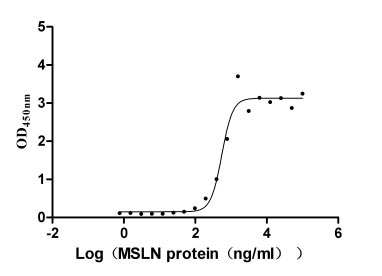
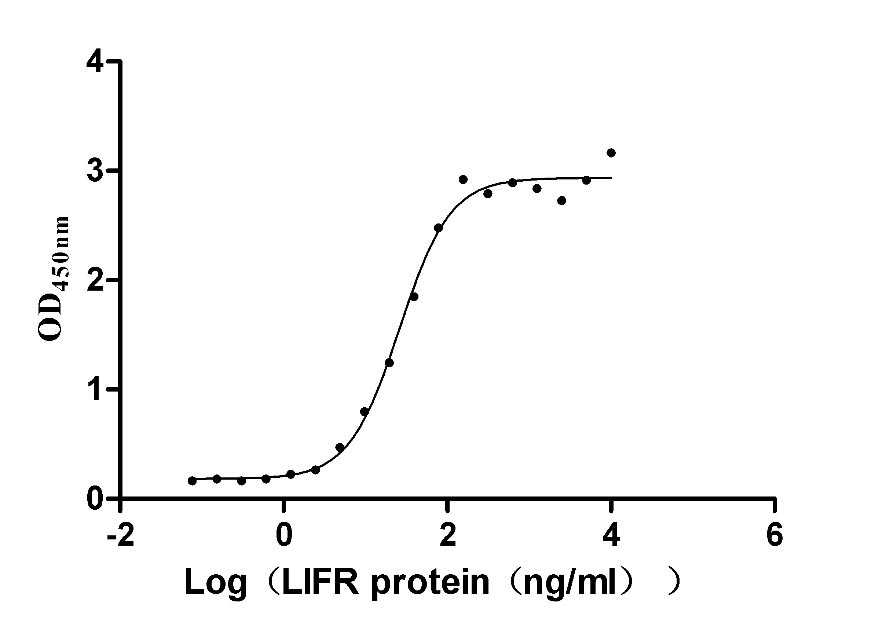
-AC1.jpg)
